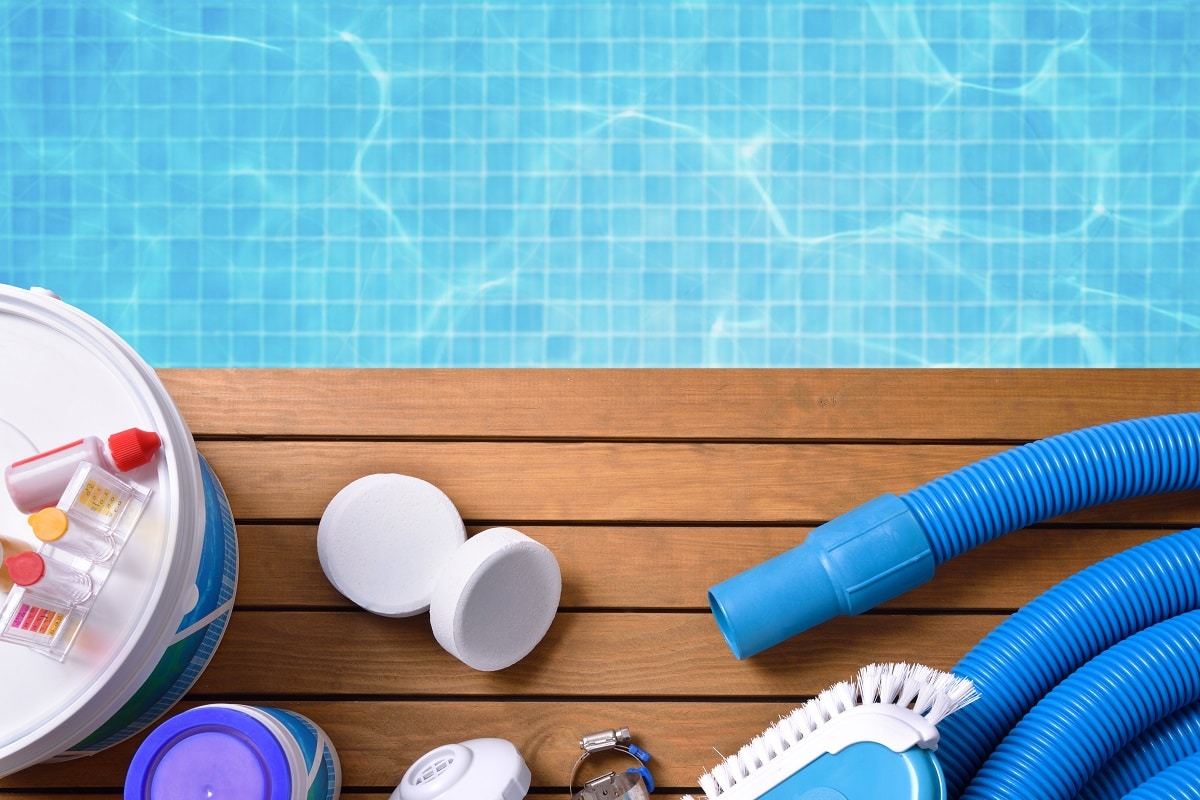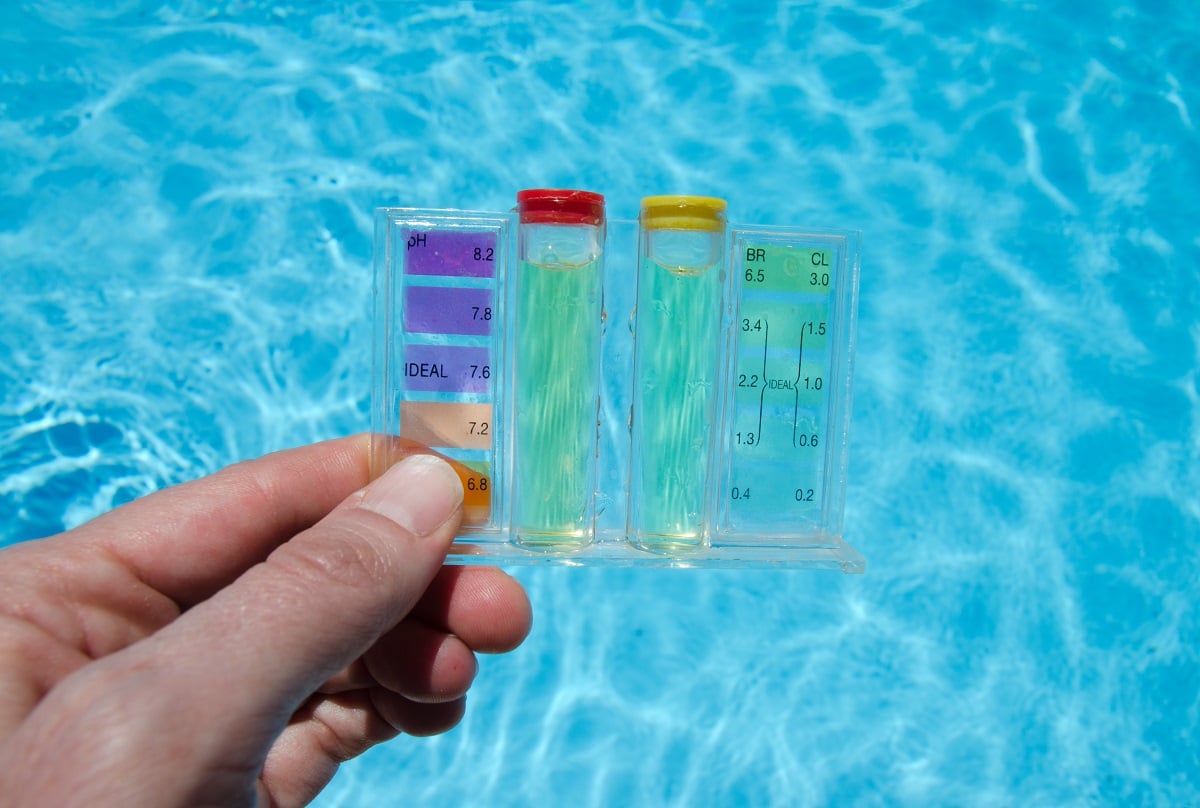
We know at Sunrise Pools, that having a lovely swimming pool for your family is ideal, but you also need to keep in mind that maintaining proper chlorine levels is crucial for a healthy pool. If you’re going to own a pool, you need to be ready and willing to invest time and money into swimming pool care. By making sure the water is clean, sanitary and free of pathogens, you and your loved ones will be able to make the most out of your private swimming spot. As with many things in life, this is easier said than done. Rather than throwing in a mix of pool chemicals and calling that good, you need to take a closer look at the amount of chlorine in your pool. While it may be difficult to balance the chlorine levels, it’s essential if you want a healthy pool for the days, weeks, and years to come. While swimming pool maintenance service in Buford, GA, is fantastic, it’s also beneficial if you can remember some of these important details of chlorine on your own, too!
Chlorine Shock
If you haven’t heard of chlorine shock, you should start implementing this process in your pool. It’s common for a considerable amount of organic materials to build up in your swimming pool over time, but you need to know that normal amounts of chlorine won’t be enough to solve the problem. What you really need to do is shock the water by adding significant doses of chlorine over a short period of time to destroy any bacteria in your pool. Whether it’s been a while since your pool has had such important chlorine treatment, or if you just filled it up, make sure the chlorine can work its magic by shocking the pool.
pH Levels
Next on your to-do list should be measuring the PH levels of your pool water. If the PH level is too high, the right amount of chlorine won’t be enough to ensure safe swimming water. You should know that chlorine is less effective in acidic water, so it’s ideal to have a pH level of 7.2. Levels up to 7.6 are okay too, but anything too high will mean it’s time to add muriatic acid into the deep end of the pool as the pump is running. With the compound circulating quickly, you’ll be ready to retest your levels in about six hours. You should avoid lowering the level too rapidly, as the fluctuation will be nothing but frustrating for your swimming pool maintenance.
Pool Chlorine
Once you take these steps, your pool water will be ready, so you can start the process of adding the chlorine. Chlorine can be purchased in tablets, floating sticks or automatic feeders. It’s in your best interests to avoid those products that need running water to dissolve, as you may be tempted to place them in the skimmer basket, resulting in very low pH water in the pool pumping system. You also don’t want tablets that easily crumble and fall apart, as the top tablets dissolve at a relatively even rate, getting smaller over time while maintaining their shape. You should most certainly keep this in mind if you’re going to use a floating chlorinator. Swimming pool cleaning is made so much easier if you make the right choice for your pool chlorine.
Automatic Chlorine
To have the best chances of success with the chlorine levels in your pool, you may want to join many other home owners who choose automatic chlorine feeders. These are easy to use and proven to help with maintaining a safe swimming pool for your household. Chemical feeders meter out precisely accurate chlorine amounts into the pool automatically, giving pool owners a hassle-free way to control the amount of chlorine going into the swimming pool.

Accurate Amounts
No matter what type of chlorine system you choose to use for your pool, remember that the chlorine level should remain between 1.0 and 3.0 parts per million (ppm) to ensure a safe and healthy pool. If the levels are any higher, you may be at risk of swimmer’s itch and red eyes. You just want to be able to detect a slight smell of chlorine, and any super strong smells may mean you need to eliminate built up containments by shocking the pool.
If you want to do some calculations on how much chlorine you’ll need to use, just remember that you’ll need to know the total gallons of water your pool holds. From there, you can understand the simple formula. Once you know total volume, then it’s a simple formula: one ounce of chlorine equals 1 ppm in 75,000 gallons of water. That’s equivalent to 0.013 ounces of chlorine per 100 gallons. At the end of the day, you want to aim for consistency, so you really should check your pool pH levels every few days. This way you’ll be able to see how well the chlorine is sanitizing the pool. Yes, chlorine is neutralized when it interacts with sunlight or any contaminant, so you need to make sure your pool has proper levels. If you’re struggling with a floating device with one-inch tablets, you may need to adjust your automatic chlorine feeder or use three-inch tablets instead. So long as you stay consistent with your pool testing, you’ll be able to make any necessary changes to ensure your chlorine levels are safe and you and your family can have fun in the pool!
